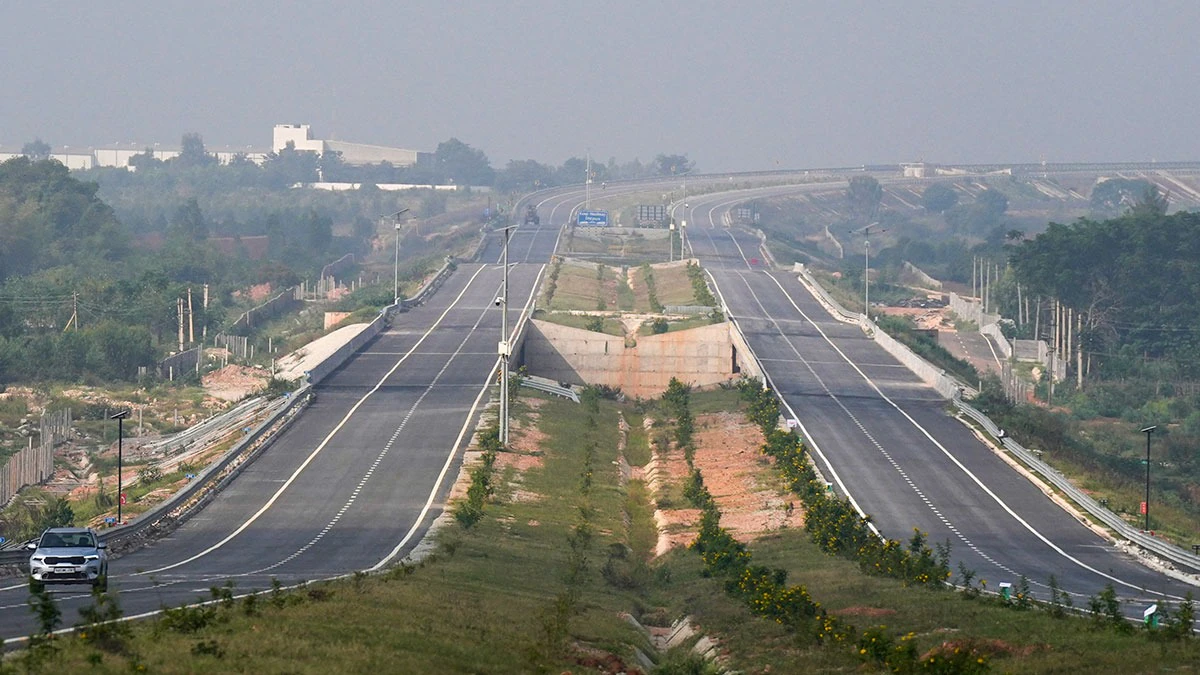With an eye on the ripple effect it has on employment generation and attracting private capital, the Narendra Modi government has doubled down on massive public spending through infrastructure in Budget 2025, with large connectivity projects and urban redevelopment as the main focus.
An allocation of over Rs 11.5 lakh crore for capital expenditure (capex) shows a clear and continuing focus on public spending on infrastructure as a means of economic recovery. Amplifying capital spend by states, the Centre will also set up an Urban Challenge Fund of Rs 1 lakh crore to support 25 per cent of the cost of bankable projects in urban development.
A HIGH-STAKES BET
Finance minister Nirmala Sitharaman said the outlay was a “transformative moment” for India’s infrastructure ambitions. “Infrastructure development remains a cornerstone of India’s growth strategy, with targeted investments to enhance connectivity and reduce logistics costs,” she said.
The government’s strategic pivot leans heavily on public-private partnerships (PPPs) and asset monetisation to balance investment with debt sustainability. The second Asset Monetisation Plan (2025-30) aims to reinvest Rs 10 lakh crore into new projects over five years, underpinned by regulatory reforms to attract private capital.
“The second Asset Monetisation Plan (2025-30) will plough back Rs 10 lakh crore into new infrastructure projects, with regulatory and fiscal measures to support its execution,” Sitharaman announced in her Budget speech. She said the Urban Challenge Fund will “focus on growth hubs, creative redevelopment and water-sanitation initiatives”.
India’s infrastructure spending crossed Rs 10 lakh crore in 2023-24, riding on post-pandemic recovery combined with the PM Gati Shakti Master Plan, which cut logistics expenses. Budget 2025 now seeks to connect more areas with a focus on transport projects and eco-aligned city growth.
Raghav Madan, director at Deloitte India, highlighted the impact of the second phase of the National Infrastructure Pipeline (NIP) on investment attraction. “The second phase of NIP is expected to further encourage this innovation, including encouraging other classes of investors to participate in Indian infrastructure. Public invites by government agencies like the National Highways Authority of India (NHAI) can help achieve this new NIP target.”
HEAVY LIFTERS: RAILWAYS, HIGHWAYS AND PORTS
The railways and highways sectors have again dominated capital allocations. The Indian Railways, which moves 8.5 billion passengers annually, has been allocated Rs 253,424.65 crore, up from last year’s Rs 244,110 crore. The government plans to invest in expanded freight corridors, upgraded rail centres and more.
The highways allocation of Rs 278,192.07 crore is a 7.4 per cent rise from last year. The Bharatmala Pariyojana programme as well as rural road plans lead this focus. The maritime sector received Rs 25,000 crore as Maritime Development Fund for port revamp. The Sagarmala Programme got Rs 3,371.94 crore to expand ports or develop waterways.
A NEW UDAN
The civil aviation sector got Rs 2,400.31 crore, with UDAN (Ude Desh ka Aam Naagrik) 4.0 programme to improve regional flights. Airport development in small cities needs private capital. A new version of UDAN aims to link 120 destinations, potentially serving 40 million fliers over the next decade. The plan includes support for helipads as well as small airports in hilly areas and the Northeast.
“Investment in developing world-class airports, enhancing regional connectivity, capacity upgrades, procedures, regulatory framework and streamlined visa facilities will all play a critical role in bringing to life this vision of developing India into a global aviation hub,” said Pieter Elbers, CEO of Indigo, India’s largest airline.
Budget 2025 seeks to interconnect multiple ways of travel, boost clean infrastructure and rural growth. The PM Gati Shakti Master Plan leads the effort to combine logistics. Electric highways built for EVs and clean ports show a clear direction toward earth-friendly building projects.
The pace of land acquisition remains a major obstacle for infrastructure projects. Legal disputes or complex procedures delay projects and cause execution problems. Supply-chain issues also raise costs along with schedule changes.
The private sector is expected deliver about 25 per cent of the total funding through the PPP model. Transportation projects, such as highways, ports or urban networks, need substantial private investment to succeed. These joint efforts will shape how fast new facilities emerge.
In recent years, infrastructure development has given a boost to employment in India. Analysis by Moody’s Ratings highlights how these developments have spurred growth in the construction, steel, cement and transportation sectors. The anticipated increase in job creation correlates with the government’s planned capital investment of Rs 11.1 lakh crore in connectivity initiatives for 2024.
The construction industry employs 71 million individuals (2023), which is projected to touch 100 million by 2030, establishing it as the second-largest source of employment in India. The International Monetary Fund (IMF) found that infrastructure funds create 7 to 30 jobs per $1 million spent based on the sector, with roads or water projects offering the most positions.
A Periodic Labour Force Survey shows a 36 per cent rise in jobs (170 million jobs) from 2016-17 to 2022-23 because of investments in infrastructure. Research also shows valuable results despite skill gaps. Each Rs 1 crore invested in these sectors leads to a 2.5-5.6 per cent job increase. The data matches overseas studies, all of which proves that infrastructure projects create immediate jobs as well as lasting economic growth.
Subscribe to India Today Magazine

